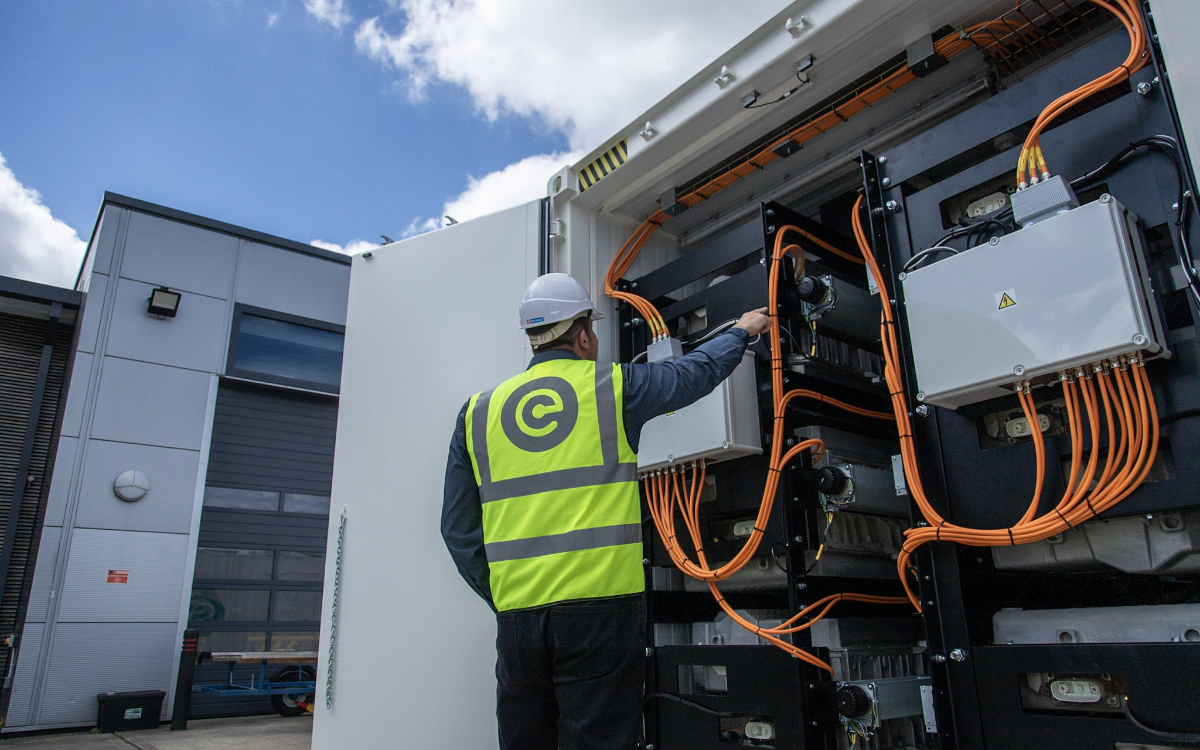Updated with additional comment
A demonstration project on second-life batteries in energy storage will combine multiple battery types with different states of health and performance. Part of a wider consortium led by car maker Nissan, Connected Energy of the UK is leading on the second-life battery element of the project. It specialises in large-scale energy storage using second-life EV batteries.
It said the project will enable it to demonstrate the ability of large-scale second-life systems to compete with new lithium-ion systems.
“Our goal is to develop and demonstrate a pioneering economic model for large-scale second-life energy storage systems that can be easily scaled up further and replicated,” said Matthew Lumsden, CEO of Connected Energy.
The UK government published a report ‘Safety of second-life batteries in battery energy storage systems’ in 2023. It continues to stimulate debate.
The report reviewed the hazards of lithium-ion batteries and the risks specific to second-life batteries. It provides a detailed analysis of the relevant codes, standards and regulations. Best practice is considered when using second-life batteries in battery energy storage systems (BESS).
The report contained input from representatives from over 30 organisations, including BESS and EV manufacturers and suppliers, industry associations, battery recyclers, research institutes, public and government bodies, product safety experts, and standards bodies.
A web discussion last week on the report saw experts agreeing on the potential risk of using second-life batteries in BESS, focusing on damage to battery cells and ageing of the battery chemistry.
Pramoda Gode from the Global Battery Alliance – which has launched a second wave of a battery passport pilot – said that the full history of batteries given a second life should be known and that safety aspects indicate that lithium-ion batteries should be used only for the original purpose for which they were designed.
Other experts refer to present standards, such as UL 2580 for EV batteries and the US NFPA 855 on fire safety.
Nicholas Bartlett from the National Renewable Energy Laboratory said: “The current regulatory framework in the US via NFPA 855 makes deployment of second-life batteries challenging.”
He added: “In the absence of the minimum safety certifications that would be expected of new batteries, I would hope additional risk reduction measures would be in place for any installation in a site-specific manner (greater separation distances, robust safety systems)”.
A conclusion would be that EV batteries are discharged and charged much more frequently than stationary applications and may be done so under extreme temperatures, he said. A fundamental discussion and understanding on how previous use impacts the new use is needed.
Lumsden said Connected Energy welcomes the government’s report on the safety of second-life energy storage, which primarily focussed on domestic systems. “When working with second-life batteries, safety is paramount. Clear regulatory standards should be put in place to ensure standardised testing and safety protocols. People should not be utilising second-life batteries without working in collaboration with battery OEMs who provide access to their battery data to ensure both performance and safety.
“The first step is ensuring you have a quality product, so we only work with batteries from leading OEMs. Secondly, we design our systems with a ‘safety first’ approach. This includes rigorous battery selection and testing, as well as AI technology for round-the-clock battery monitoring, acting as an early warning system should it detect an anomaly.”
He said discussions around domestic systems are right, and that the extra precautions it builds into its commercial BESS “substantially reduce risk.”
Photo: Connected Energy second-life storage system. Connected Energy











